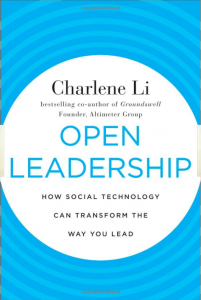Here is a draft of the first chapter of Social Marketing to the Business Customer by Paul Gillin and Eric Schwartzman. This chapter focuses on drawing the major distinctions between business-to-business (B2B) and business-to-consumer (B2C) markets and where social marketing has particular value to B2B companies. Your feedback is welcome. Please ignore the typos and grammar flaws that inevitably appear at this stage.
Friends know Scott Hanson as an affable native Texan with a penchant for computers, cars and poker. But to thousands of technology professionals around the world, Hanson is a celebrity. By day, he and three other technologists at Dell Computer manage the Dell TechCenter, an online community that helps enterprise IT professionals unravel the thorniest problems that occur when trying to integrate technology from multiple vendors.
Dell conceived of the community in 2007 as a way to enhance loyalty among its largest customers. Members share advice and ask questions of Hanson and the other engineers, who dispense it for free. The community is open and fully searchable, although only registered members can submit articles and comments. In 2008, about 100 people visited the site every day. By early 2010, that number was over 5,000.
Hansen and colleagues Jeff Sullivan, Kong Yang and Dennis Smith are celebrities of sorts in the community of enterprise customers, who frequently seek them out for meetings at trade shows and during visits to the company’s executive briefing center. Their celebrity is paid off handsomely for Dell: Hanson won’t provide specifics, but Dell has estimated that the Tech Center is indirectly responsible for many millions of dollars in sales each year.
That’s despite the fact that Dell Tech Center isn’t charged with selling anything. The site is free of advertising and the member list may never be used for promotions. “The last thing IT people want when they come to a technical resource is an ad asking them to buy a laptop,” Hanson says.
Those sales are generated by the affinity that the staff has developed with these key corporate customers. It’s a camaraderie that is nurtured by personal contact. In the early days of Twitter, the Dell TechCenter staff had set up a common Twitter account as a secondary channel of communication. But it turned out that customers wanted to speak to people, not brands. The Twitter initiative really gained traction when Hanson became @DellServerGeek and Sullivan became @SANPenguin. Suddenly the discussion became more personal and the people behind Dell TechCenter more real to their constituents.
Welcome to the new world of B2B communications. Dell TechCenter and other initiatives like it are microcosms of the changes that are sweeping across corporate America as a consequence of the rapid growth of social media tools like blogs, communities and user-generated multimedia.
Companies like Dell, which does 80% of its sales volume with corporate customers, are ideally positioned to take advantage of these new channels. In fact, B2B companies were among the earliest adopters of social media. Technology leaders like Microsoft, IBM and Cisco had hundreds or thousands of employees blogging as early as 2005 and those same companies are now expanding their footprint into social networks like Facebook, YouTube and, overwhelmingly, Twitter.
Microsoft used a video program called Channel 9 to show its human side to a market that saw it as a closed and secretive company. B2B technology companies have also been among the most creative users of social channels to reach the highly skilled people they need to hire in competitive labor markets. Recruiters have found that social channels are far more effective in identifying prospective employees than recruitment advertising sources and that prospects came into the hiring cycle with a better understanding and more enthusiasm about the company they were hoping to work for.
Yet B2B applications of social media get remarkably little attention. Perhaps that’s because their focused communities of buyers pale in size to the millions who flock to Facebook Official Pages for Coca-Cola and Nike is. Perhaps it’s because glitzy video contests and games don’t resonate with the time-challenged professional audience. It doesn’t really matter. Few B2B companies seek the consumer spotlight and their audiences, which may spend millions of dollars with them, are more interested in substance than in style. Fortunately, B2B social media is all about substance. Continue reading


